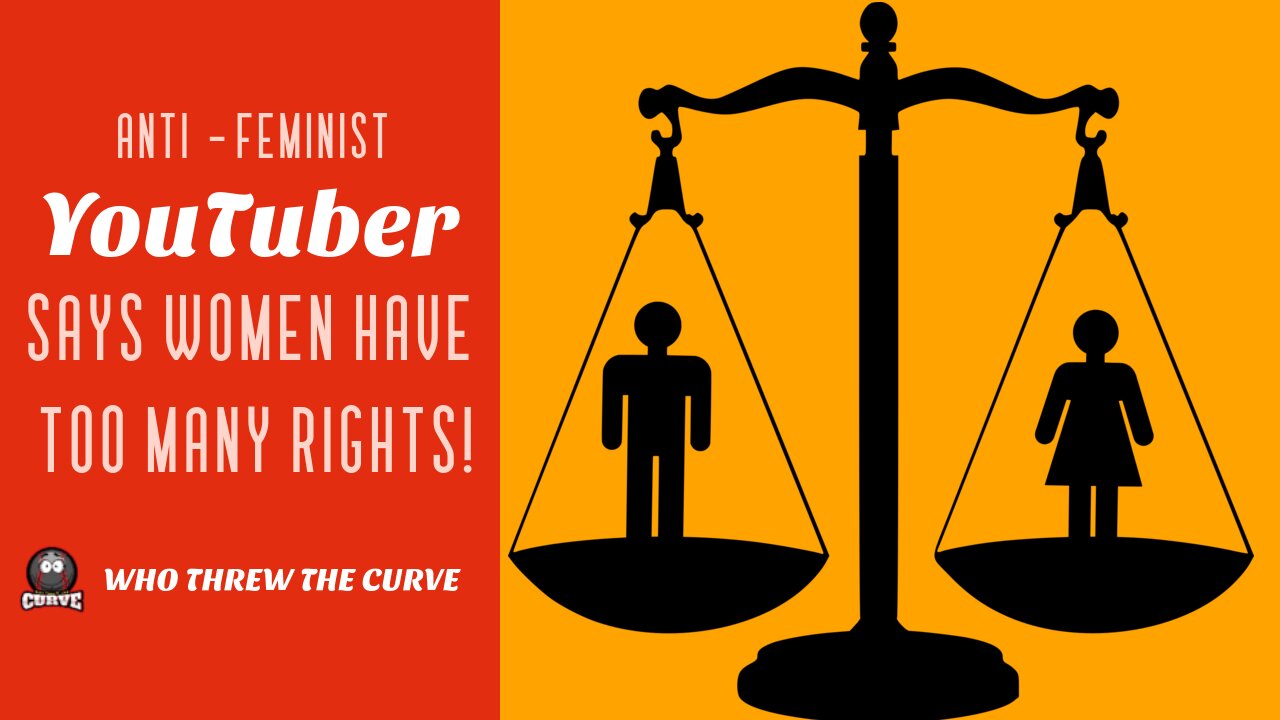Premium Only Content

Anti -Feminist YouTuber Says Women Have Too many Rights!
HISTORY OF THE WOMEN'S RIGHTS MOVEMENT
In the annals of human history, there are few struggles as resilient and transformative as the women's rights movement. From the suffragettes of yesteryears to the fierce activists of today, women across the globe have fought valiantly for their rights, challenging societal norms and paving the way for a more equitable future. Join me as we delve into the inspiring history of this movement, a journey marked by resilience, determination, and unwavering strength.
It all began in the late 19th century, a time when women were confined to the domestic sphere, their voices stifled by a patriarchal society. However, a spark of defiance ignited, giving rise to the first wave of feminism. Brave women like Susan B. Anthony and Elizabeth Cady Stanton emerged as powerful advocates for women's suffrage, demanding the right to vote and an end to gender discrimination. Their tireless efforts laid the foundation for change.
As the 20th century dawned, the suffragettes became louder, bolder, and more assertive. They organized rallies, picketed outside government buildings, and even endured brutal force-feeding while on hunger strikes. Their unwavering determination and unyielding spirit caught the world's attention, and finally, in 1920, the 19th Amendment to the United States Constitution was ratified, granting American women the right to vote.
But the fight for women's rights did not end there. The second wave of feminism erupted in the 1960s and 70s, fueled by a desire to challenge deeply ingrained gender roles and societal expectations. Women like Gloria Steinem and Betty Friedan led the charge, advocating for reproductive rights, workplace equality, and an end to gender-based violence. They fought for the recognition of women's contributions in all spheres of life, igniting a cultural revolution that reverberated throughout the world.
As the new millennium dawned, the third wave of feminism emerged, embracing intersectionality and inclusivity. This wave recognized that the struggle for women's rights is not limited to gender alone, but also encompasses race, sexuality, and class. Activists such as Malala Yousafzai and Emma Watson became symbols of this wave, advocating for girls' education and gender equality on a global scale.
Today, the women's rights movement continues to evolve and adapt in the face of new challenges. It has become a powerful force, harnessing the collective power of women and allies worldwide through social media campaigns, grassroots movements, and political activism. The fight for equal pay, reproductive rights, and an end to gender-based violence persists, as does the call for greater representation in positions of power.
The history of the women's rights movement is a testament to the indomitable spirit of women throughout the ages. It reminds us that change is possible, that progress can be achieved through relentless determination and unwavering solidarity. As we navigate the complexities of the modern world, let us honor the sacrifices of those who came before us and continue to strive for a future where women's rights are not mere aspirations, but fundamental truths. Together, we can shape a world that celebrates the strength, resilience, and power of women in all their diverse forms.
-
 LIVE
LIVE
The Bubba Army
21 hours agoIs Trump LYING?! - Bubba the Love Sponge® Show | 7/17/25
2,650 watching -
 LIVE
LIVE
FyrBorne
12 hours ago🔴Warzone M&K Sniping: Can Anything Defeat The TR2 Meta?
202 watching -
 16:10
16:10
Ohio State Football and Recruiting at Buckeye Huddle
1 day agoOhio State Football: The 10 Most Unbreakable Defensive Records in Buckeye History
1.21K -
 12:42
12:42
The Shannon Joy Show
13 hours ago🔥Autism Spike & mRNA Deaths.🔥
1.55K1 -
 27:47
27:47
The Jack Brewer Show
13 hours agoThe Jack Brewer Show S1 EP2 | Eric Metaxas on Culture, Fatherhood, and Biblical Truth #podcast
1.45K1 -
 0:27
0:27
Rena Malik, M.D.
22 hours ago $0.02 earnedWhat's the difference between two game-changing treatments for BPH? | Rezum vs. BPH
1.39K1 -
 17:08
17:08
Esports Awards
17 hours agoiiTzTimmy on Quitting Pro Apex, Streaming Fame & What’s Next | Origins Podcast #16
1.72K -
 9:00
9:00
Zoufry
1 day agoThe Evil Design of Grocery Stores
4.27K7 -
 11:03
11:03
Actual Justice Warrior
21 hours agoINSANE McDonald's Employee Stabs Manager Over NOTHING
5.11K19 -
 12:20
12:20
Nikko Ortiz
16 hours agoWorst TikTok Crashouts Part 4
8.87K7